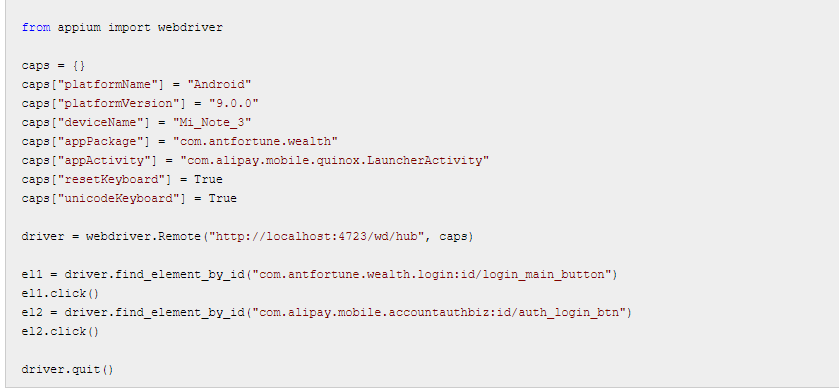

- #Appium app capabilities driver#
- #Appium app capabilities series#
- #Appium app capabilities simulator#
Sometimes this works, and sometimes this doesn't. So it installs and runs a little helper app that tries to unlock the screen before a test.

skipUnlockĪppium doesn't assume that your device is unlocked, and it should be to successfully run tests. Set to true to have Appium attempt to automatically determine your app permissions and grant them, for example to avoid system popups asking for permission later on in the test.

If you don't need the features that require the watcher loop (like toast verification), then set this cap to true to turn it off entirely and save your device some cycles. Running a loop like this takes up valuable CPU cycles and has been observed to make scrolling less consistent, for example.
#Appium app capabilities driver#
The only way to check for toast messages on Android is for the Appium UiAutomator2 driver to run a loop constantly checking the state of the device. Android-specific Capabilities disableAndroidWatchers Of course, in headless mode any tooling you have around taking videos or screenshots outside of Appium will not work.
#Appium app capabilities simulator#
Set this cap to true to launch a simulator or emulator in headless mode, potentially leading to a performance boost, especially if you're running in a virtualized or resource-constrained environment (such as a VM farm). isHeadlessīoth iOS and Android have the concept of 'headless' virtual devices, and Appium can still work with devices that are running in this mode. This might be necessary if the default cleanup is not enough to make your build reliable, and you know that the instability is due to leftover state from previous tests. Set this cap to true to add even more time-consuming cleaning subroutines. The opposite of the previous cap is fullReset, which does even more cleanup than by default.

If you don't need the safety, take a shortcut for the sake of speed! fullReset This of course is important for ensuring determinism in your test suite: you don't want the aftereffects of one test to change the operation of a subsequent test! If your tests don't require this kind of clean state, and you're absolutely sure of it, you can set this capability to true to avoid some of the time-consuming cleaning subroutines. So let's take a look! Cross-platform Capabilities noResetīy default, Appium runs a reset process after each session, to ensure that a device and app are as fresh and clean as when they first arrived. Some of these capabilities are useful from the perspective of speed or reliability, and can help stabilize tests, especially if you find yourself in the specific scenario that they were designed to address. There are caps to tweak default timeouts, to set the language on a device before the session, to adjust the orientation, or work with a host of system-specific issues like paths to important binaries or which ports Appium should use for its internal mechanisms. Appium actually supports a host of other capabilities-over 100 of them, actually.Īll these optional caps basically tell Appium to behave differently. We all know about capabilities (which we all love to abbreviate as "caps") because we have to get dirty with them just to start a test successfully, using capabilities like platformName or deviceName to let Appium know what kind of thing we're interested in automating. When you start a session, you can tweak the way Appium operates by means of session initialization parameters known as "desired capabilities" (in Selenium parlance in the language of the W3C WebDriver spec they are simply "capabilities"). You might also want to check out the previous episodes on Test Flakiness, Finding Elements Reliably, Waiting for App States, Dealing With Unfindable Elements, and Setting Up App State.Īppium sessions are not just Appium sessions.
#Appium app capabilities series#
This article is the sixth in a multi-part series on test speed and reliability, inspired by a webinar I gave on the same subject (you can watch the webinar here).


 0 kommentar(er)
0 kommentar(er)
